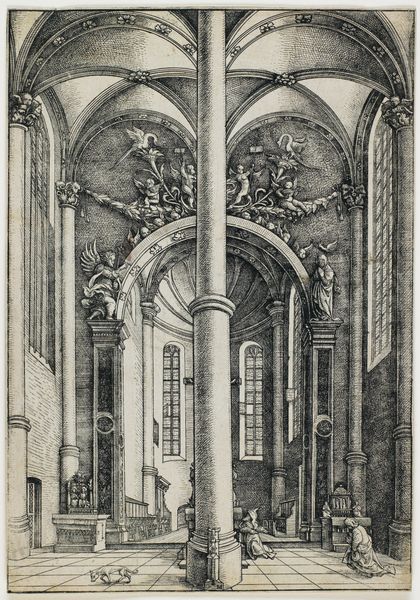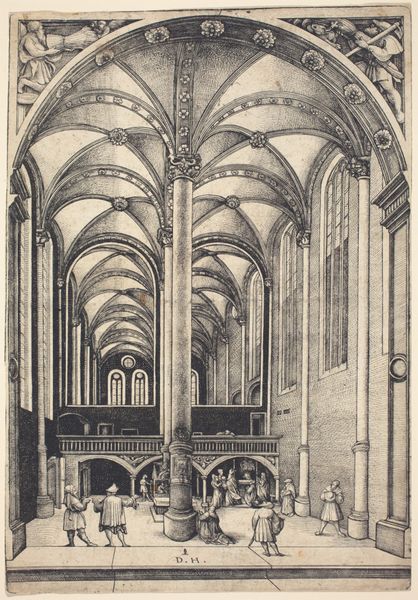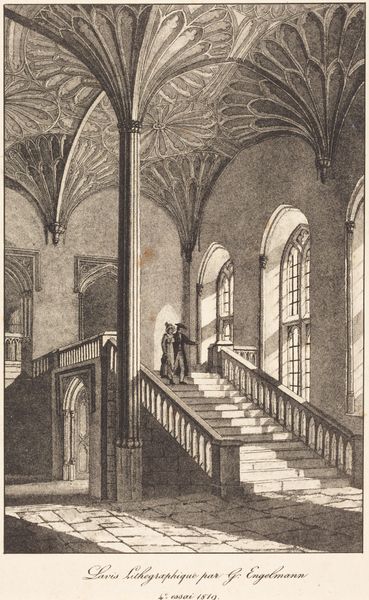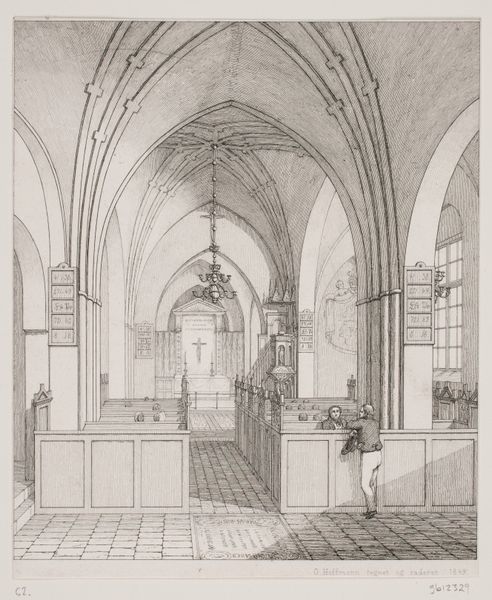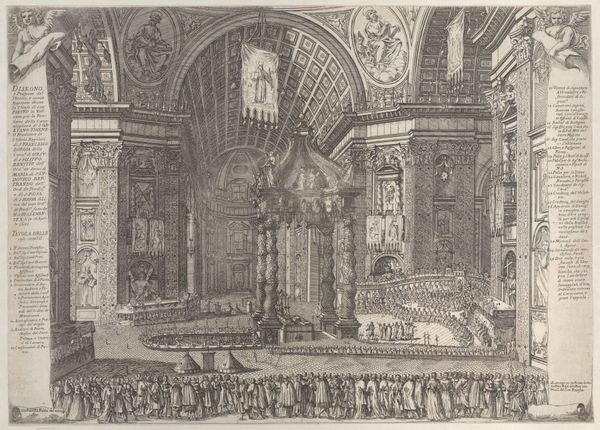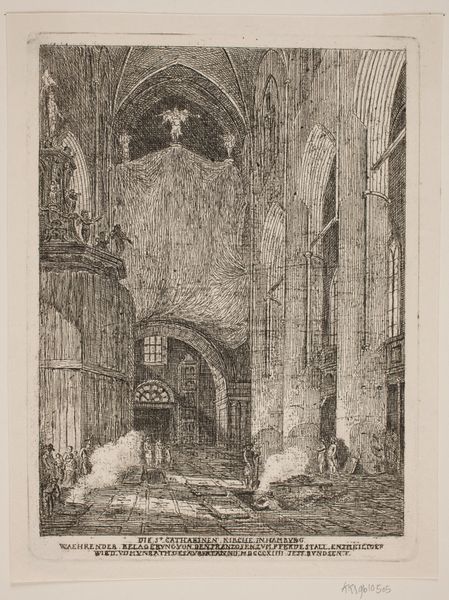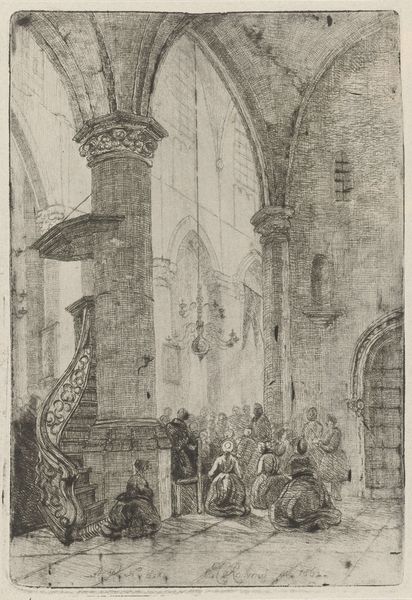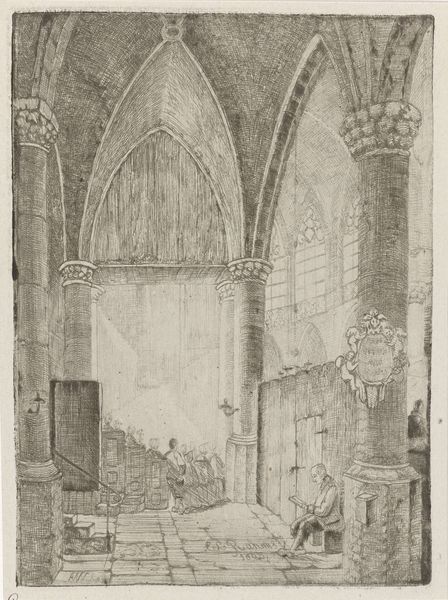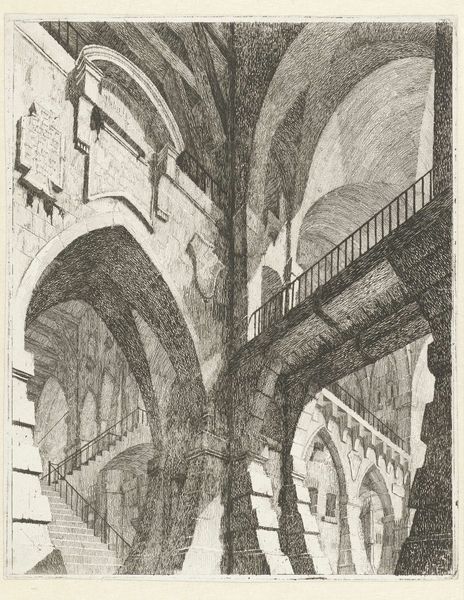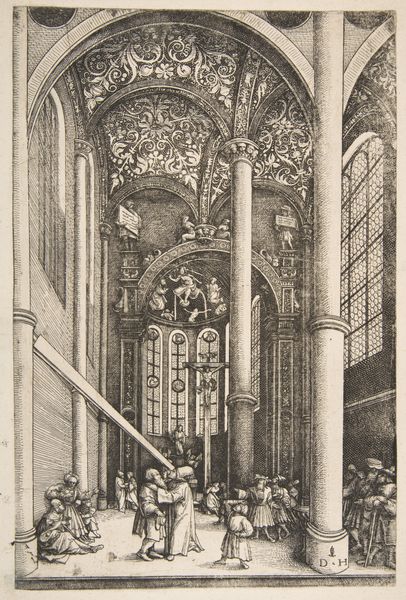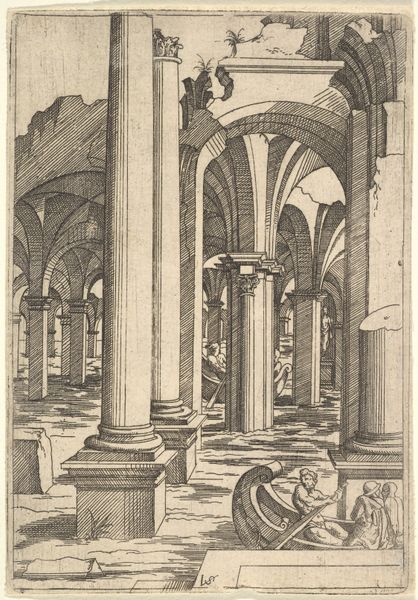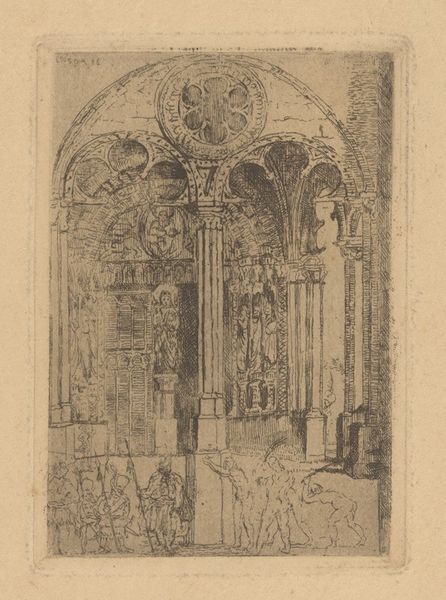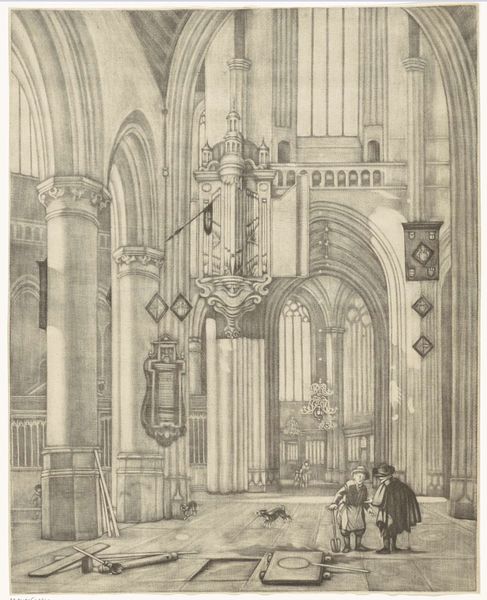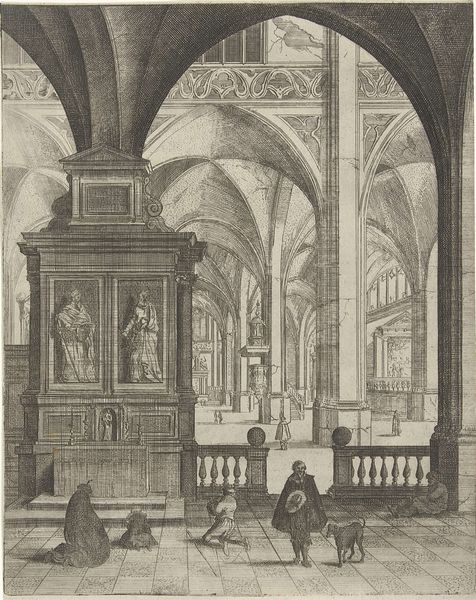
Interior of the Church of Saint Katherine with Parable of the Pharisee and the Publican c. 1530
0:00
0:00
#
pencil drawn
#
toned paper
#
light pencil work
#
mechanical pen drawing
# print
#
pencil sketch
#
sketch book
#
personal sketchbook
#
pen-ink sketch
#
pen work
#
pencil art
Dimensions: sheet (trimmed to plate mark): 28.4 x 19.7 cm (11 3/16 x 7 3/4 in.)
Copyright: National Gallery of Art: CC0 1.0
Editor: This is Daniel Hopfer’s "Interior of the Church of Saint Katherine with Parable of the Pharisee and the Publican," created around 1530. It's a print, and the detail is incredible, it almost feels like I'm peering into this sacred space, yet there’s a strange sense of isolation. What do you see in this piece? Curator: Beyond the technical skill evident in the print, I see a commentary on social and religious hierarchies being solidified in the 16th century. Notice the architecture: imposing, hierarchical, demanding submission. Hopfer is presenting a physical manifestation of power, but the inclusion of the parable introduces an element of critique, wouldn't you agree? Editor: The parable… So, the figures kneeling represent that? The contrast between the humble publican and the self-righteous Pharisee? Curator: Precisely. How does placing this very human story within such a grand, arguably oppressive, architectural space, impact the meaning? Is Hopfer suggesting that true piety exists outside or even in opposition to established institutions? Editor: That's fascinating! It’s like he's using the church itself as a stage to question the very power structures it represents. And look, there's even a dog roaming freely; a nice ironic touch in contrast to the very controlled architectural space. Curator: It certainly humanizes the scene! And begs the question of who gets to decide who's worthy in this church; is it just God or someone on Earth? Considering the Reformation was underway, challenging papal authority, one must consider if this artwork engaged with contemporary religious tensions, or simply mirrored the existing political landscape of the time. Editor: I never would have thought to interpret a church interior as a commentary on religious power, but you've completely changed how I see it. Thanks! Curator: Likewise! Looking closely at art allows us to really analyze structures of power and think critically about how we, too, internalize them in our contemporary society.
Comments
No comments
Be the first to comment and join the conversation on the ultimate creative platform.
